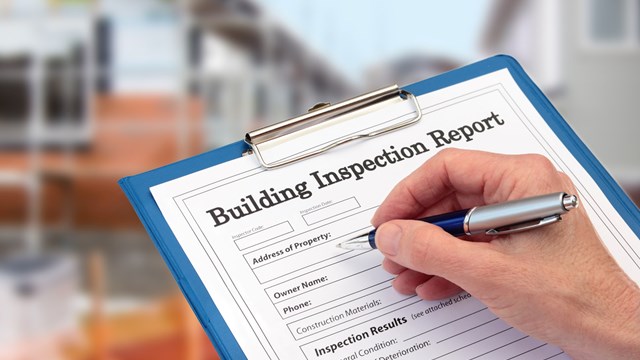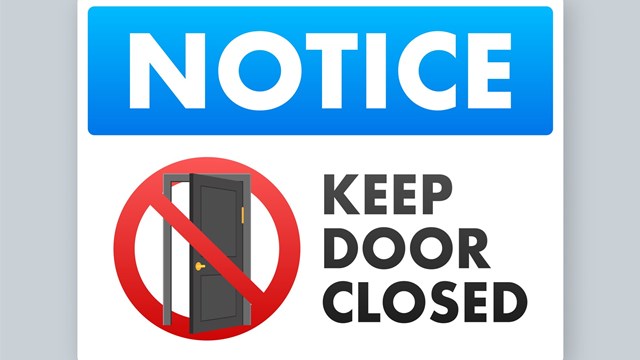According to most experts, current overall crime rates in America’s 30 largest cities are at historic lows. This crime data comes directly from local police departments in those cities – and while these figures are seen as a positive by law enforcement and security professionals, condos, co-ops, and HOAs must take a deeper dive into respective neighborhood crime statistics to fully understand the risks and vulnerabilities facing their particular communities.
The Lay of the Land
Determining what level of security is appropriate for a particular community is based in part on the level of risk community members are comfortable with, “seasoned by a realistic look” at the risk actually present in the community, explains Larry Amaker, CEO of Amaker & Associates Investigations, LLC, a security consulting firm based in Hertford, North Carolina.
“Absolute security is not achievable,” says Amaker. “The idea is to secure the community to such a level that the inhabitants feel there is sufficient security to protect them, and the antagonist feels the community is too difficult to broach without a high risk of capture. No one wants to live in a prison – and it’s not necessary to in order to feel safe.”
Pat Hurley, Director of Business Development for Cambridge Security Services, which has locations in Newark, Fort Lauderdale, and Las Vegas, agrees. “Every community is different in the level of access control and the security they desire. I encounter communities at both ends of the spectrum, and a lot in the middle. Some say they just want a warm friendly face to wave everybody in, and then [there are] others on the other end of the spectrum who want a very intense access control program. Our job is to try to match the flavor of each community with a great program that is highly effective and meets their expectations.”
Observations Are Key
According to Tim O’Brien, CEO of Astoria, New York-based Criminal Intelligence Administration, a private security consulting firm, observations from residents, board members, and management are the first step to ensuring security and safety. Information gained by the people who actually live in a community can then be shared with professionals as they assess the property and surrounding neighborhoods. The most important goal, however, is determining the wants and expectations of HOA residents.
Hurley concurs. “A lot of it has to do with experience to date, with incidents, with criminality and with the area in which the HOA or condo is located,” he says. “We evaluate exactly what their experiences have been, and try to put together an effective program that addresses those needs.”
When working with the boards of residential communities, be they high-rise condos or sprawling suburban HOAs, Timothy Zehring, Executive Director of the El Cajon, California-based International Crime Free Association, Inc., says that while he encourages board presidents and members to reach out to local law enforcement to establish proactive relationships, there are easily accessible resources that can shed light on crime activity searchable by zip code.
Along with connecting with local police departments, boards and management companies are strongly advised to partner with experienced professionals, such as a credentialed security consultant, a licensed security company, or a licensed private investigator, notes Amaker. “These professionals should provide threat assessment and risk assessment evaluations.”
“The consultant for a particular project should be independent, with no conflict of interest,” says Amaker. “Good security will include careful analysis of the environmental situation in the area, including levels of reported crime, environmental hazards such as fire, earthquake, flooding, power and communication outages, and community response capabilities, among others.”
By working with seasoned professionals, boards can also be privy to proper policy and procedures that address various hazardous scenarios, adds Amaker. This includes inspecting physical security systems, such as fencing, gates, doors and locks. These systems, he adds, need to be constructed and installed in accordance with acceptable industry standards.
“[The procedures] will include adequate technical assistance and equipment, such as alarms, cameras, access controls,” he says. “And it will include effective liaison and communications with local emergency response personnel.”
A False Sense of Security?
Despite falling crime rates, O’Brien says property management firms, boards, and unit owners have a duty to ensure reasonable security measures are in place to adequately protect residents and guests from foreseeable criminal activity. America’s litigious society, he adds, has resulted in courts nationwide determining that failure to warn, maintain and/or correct situations within a premise can result in litigation and costly judgments against boards or managers deemed to be negligent.
That being said, says David Muller, a community association attorney with the law firm Becker & Poliakoff, which has offices in both New York and New Jersey, “There’s a common misconception that community associations affirmatively ensure the safety of their residents and owners, but the reality is that associations are tasked with doing that which is required of them under the governing documents and the statutes. Unless those documents specifically state that the association is tasked with protecting the residents from crime, then that’s not one of its affirmative obligations. Now, a lot of times people misconstrue that statement as allowing the board to turn a blind eye, but of course that’s not the case either. If you’re aware of violations that are happening and ignore them, there could be liability for the association.”
“Within the protection arena, successful litigation for a host of issues, including inadequate security, negligent hiring, negligent retention, failure to train, and failure to supervise can result in large jury awards and have catastrophic consequences,” says O’Brien. “The national average for defending an action can well exceed $100,000, and the average cost for case settlement currently exceeds $500,000.” Jury verdicts, he notes, average an award of $2 million and have reached as high as $16 million.
“In addition to the monetary damages, the unquantifiable costs – including damage to corporate reputation, decreased confidence from investors, low employee/tenant morale, and the potential for reduced occupancy levels – can destroy a once prosperous and well respected organization,” he says.
That said, overreaction to perceived threats can also be its own problem, says Hurley. “A board, or a community at large, will perhaps overreact to an incident or incidents, and attempt to kill an ant hill with a stick of dynamite. But it’s our job to put things into perspective and to match the solution to the problem and to not overdo it. In response to a burglary, a community’s response might be ‘Let’s call in the 101st Airborne’, when the smartest thing to do is analyze what occurred, where the vulnerabilities are, how this person or persons created this situation, and then match something to it that properly addresses it, not just from an operational standpoint, but also a budgetary standpoint. The trick here is to find a way that eliminates these occurrences from happening again, but also stays within reason where their budgets are concerned.”
Amaker agrees, and adds that in many instances, it is “reasonable and sensible” for buildings not to be panicked about security. However, he stresses that threats evolve over time, and for that reason, it’s still crucial for boards and managers to remain vigilant, with security and safety uppermost in their mind. “The unspoken goal of all good security programs is to make the protected site much harder than neighboring sites, thus forcing the risk to migrate elsewhere.”
Muller concurs. “A lot of associations want to get out in front of a potential problem and prevent something from happening down the line by taking a series of actions. And that’s true, they may be successful in prevention. But it’s like anything else in life: if you take it on, you actually have to follow through with it. You have to make sure you do it correctly, and if you take on this burden but you don’t do it correctly and you lapse in something that you were supposed to do, you’ve potentially created a liability which you may not have otherwise had.”
The Cost of Safety
Assessing crime rates with a designation of “low,” “medium” or “high” can be achieved by partnering with local law enforcement and studying crime instances and trends. In many cases, crime rates can be reduced using methods that won’t break the bank.
“If a HOA is going to hire a security expert, it is important that they shop around,” says Zehring, who adds that security protocols should be revisited every year and adjusted to reflect current reality. “A good security expert will tell you what you really need to spend money on, versus what is considered a waste.”
Proper lighting, Zehring adds, is the “least expensive and most effective” crime deterrent. “Criminals do not want to be seen,” he says. Along with well-built, fully functional locks on all access and entry points, Zehring says HOAs should invest in landscaping to ensure that bushes are trimmed to less than three feet, or below the window line, and tree limbs are trimmed up to seven feet. “This gives you a wide field of view,” he says. “Good lighting and good landscaping are very simple, time-proven security measures that work.”
To ensure good community relations, Zehring, a retired 22-year veteran of the Mesa, Arizona Police Department, also suggests that boards work with local law enforcement and co-host safety-themed social events to help get residents themselves involved in protecting their property. “At these events, board members and residents can talk about crime prevention–everything from rolling up your windows, locking your doors, taking valuables out of your car to personal safety to prevent assaults,” he says.
In order to ensure that board and resident security expectations are met, it is imperative that the hired consultant is an effective communicator. To this end, Amaker says “It’s of no use to develop a security plan that the HOA won’t utilize.”
And, says Hurley, “Don’t be reactive, be proactive. Recognize the weaknesses in either your security plan and/or your security provider, and really take strong steps to shore up both areas. Because the threats and the issues and the bad guys aren’t going away. Looking through a rear-view mirror and Monday morning quarterbacking is not particularly helpful. You need to look out at the road ahead and say, ‘How do we go from where are to where we need to be?’ Get a great security officer/provider in there who has a dynamic track record of turning failing security programs into winning ones.”
W B King is a freelance writer/reporter, and a frequent contributor to The New Jersey Cooperator. Additional reporting by David Chiu.







Leave a Comment